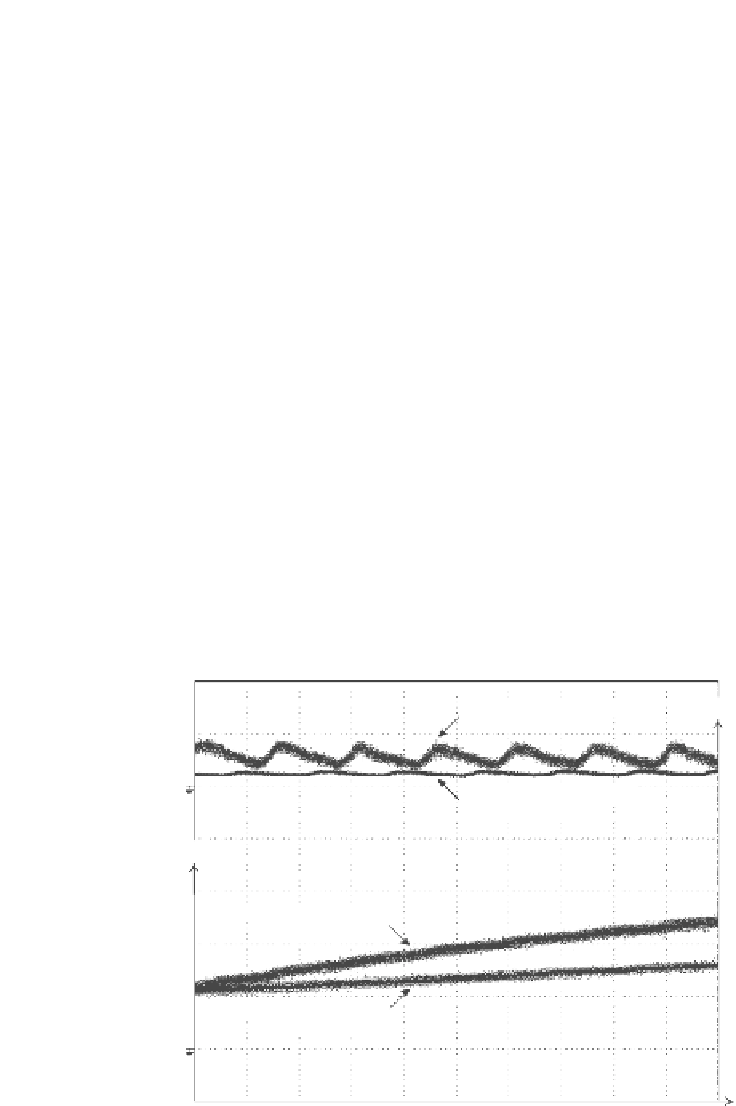Environmental Engineering Reference
In-Depth Information
comparator (LMC7215), which compares its reference signal (
d
em
∗
V
ref
=
0
5
V
= 400 mV) with the high-frequency sawtooth signal to generate
the PWM gate signal to control the buck converter.
.
16
∗
2
.
3.3.2
Energy Storage
For long-term deployment of the TEH wireless sensor node, it is required
to have an energy storage device such as supercapacitor and batteries on-
board the sensor node to accumulate the input energy generated from the
heat source and use it to sustain the node's operation throughout its lifetime.
The supercapacitor has superior characteristics over batteries, which include
numerous full-charge cycles (more than half-a-million charge cycles), long
lifetime (10 to 20 years operational lifetime), and high power density (an
order of magnitude higher continuous current than a battery) [34]. Unlike the
discrete capacitors, which have very small capacitance values in the picofarad
to microfarad range, the supercapacitor has a very large capacitance value in
the farad range suitable for energy storage purposes. For the design of the
buck converter as a resistor emulation-based MPP tracker, it is important to
consider the dynamic response of the supercapacitor to ensure constant MPPT
operation is achieved.
For a time period of 500 s as shown in
Figure 3.11
, the supercapacitor is
charged by the TEH system from its initial state of 1 V. As the supercapaci-
tor is charging, the dynamic response of the supercapacitor changes accord-
ing to the operating conditions of the TEH system; the impedance of the
Main : 125 k
50 s/div
Harvested Power (
P
in
)
with MPPT
P
/mW
1
0
Harvested Power (
P
in
)
without MPPT
V
V
/
3
2.57 V
Supercapacitor Voltage
with MPPT
2
1.73 V
1
Supercapacitor Voltage
without MPPT
0
0
50
100
150
200
250
300
350
400
Time/sec
FIGURE 3.11
Performance of a TEH system with MPPT and without MPPT for charging a supercapacitor.








Search WWH ::

Custom Search